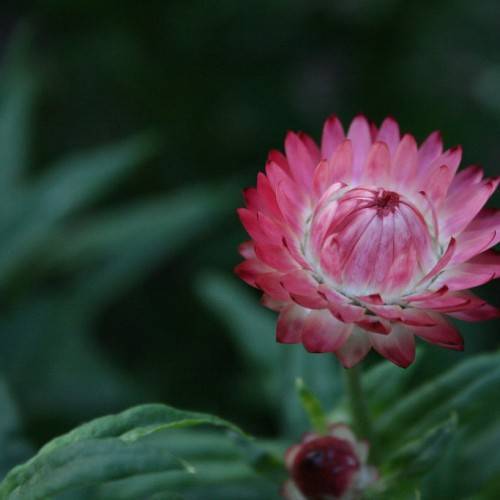
everlasting flower
Xerochrysum bracteatum
Cycle:
Herbaceous Perennial
Watering:
Minimum
Hardiness Zone:
8 - 10
Flowers:
Flowers
Sun:
Full sun
Soil:
Rocky , gravelly , dry, Well-drained
Fruits:
Fruits In Autumn Ready In Summer
Growth Rate:
High
Maintenance:
Low
Drought Tolerant:
Yes
Salt Tolerant:
Yes
Care Level:
Medium
watering
Xerochrysum bracteatum, or the everlasting flower, prefers an evenly moist soil; however, overwatering can cause the plant's roots to rot and inhibit flowering. This species does not tolerate drought conditions, so it is important to water it regularly. The best time to water this plant is in the morning, and it should be watered twice a week for best results. Depending on temperature and the plant's placement, you may need to adjust the watering frequency accordingly. For example, in a hot summer, it may be necessary to water it more frequently. Avoid watering this species late in the day as the stem nodes are vulnerable to encouragement of moulds. Approximately 1 – 1 ½ inches of water is needed per week, which can be applied by means of a water hose or watering can. Be sure not to water it from above, as this could damage the flowers and cause fungal issues. If the leaves appear wilted in the afternoon on a hot day, lightly mist the leaves to supply some additional moisture.
sunlight
Xerochrysum bracteatum, or everlasting flowers, need an abundance of sunlight to grow well. During the growing season, these bright and cheerful flowers should receive a minimum of 6-8 hours of direct sunlight, preferably in the morning, every day for optimal growth. Additionally, when the flower is in bloom, it is best to keep them in direct sunlight for at least 4-6 hours of the day, to ensure a longer lasting flower. As temperatures increase during the summer, it can be beneficial to give the flower additional protection, such as shading it with another plant or moving it to an area of your garden that has some protection from the hottest afternoon sun. During the cooler days of fall, these flowers can still benefit from some additional morning sun however, so as not to stunt the growth of the plant.
pruning
When it comes to pruning an Everlasting Flower (Xerochrysum bracteatum), it is best to prune these plants lightly throughout the growing season. When pruning, only remove dead, dying or diseased stems, as well as any stems that cross over each other. Cut back any spent flower heads, lightly shaping the plant and encouraging new growth. At the end of the growing season, you can do a harder pruning, cutting back to around half the height of the plant. These plants don't need to be heavily pruned, so depending on the weather, size and vigor of the plant, more frequent light pruning may be sufficient.
